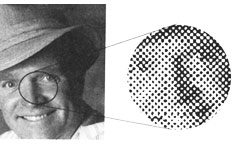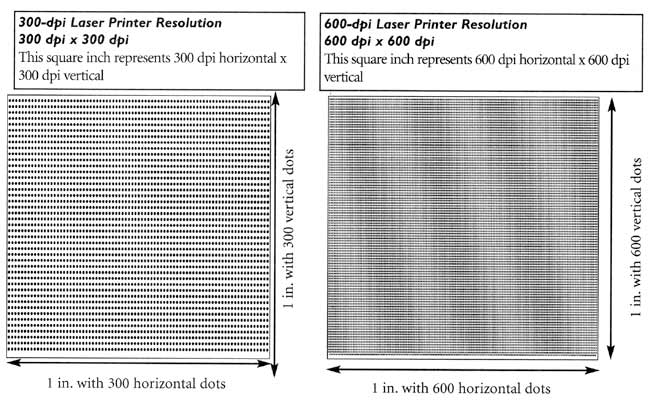![]()

Resolution determines the quality(detail) of an image either on a computer monitor or as a printed piece. First thing to do is to understand the two different kinds of resolution:
Input and Output.
Input Resolution: PPI- Pixels Per Inch
Scanned/ digital photographic images that are viewed on a computer monitor are made up of various sized building blocks called pixels.
The Smaller the pixel, the higher the resolution and the finer the detail, the sharper the image.
Input resolution is always Pixels.

Output Resolution (also called Device Resolution): DPI-Dots Per Inch
A printed image is made of halftone dot patterns and is actually an optical illusion.
Output resolution are always dots.
Dots and Pixels
Both terms, input and output refer to resolution but "dpi" or dots per inch is most commonly used when referring to resolution.
Input Resolution-PPI:
Images captured using devices such as scanners and digital cameras and are viewed on a monitor are made up of PIXELS NOT dots.
An image 150ppi is composed of 150 pixels in every inch, horizontally and vertically. The higher the resolution the smaller the pixel, themore detail that is captured and the sharper the image.
300 pixels per inch or 300ppi (dpi) is a common resolution for high quality images.
72 ppi(dpi) is common for images viewed on a monitor and is low quality .
Output Resolution
The maximum number of dots that a device, such as, an imagesetter (high-end output device), or laser printer, can cram into an inch, and it is the key determinant of image sharpness when it is printed.
When an image is printed, the DPI of the output device, as well as the PPI (input resolution) of the image, will determine the print quality.
When images are printed on laser, inkjet or other printing devices, the building blocks of the image changes from pixels to dots. To prepare the image for printing, image pixels are converted into patterns of dots.
This conversion is called Raster Image Processing or RIP.
Raster = dot
Image = image
Processor = device that alters the characteristics or changes one thing (pixels) into another (dots).
Sole function of a RIP: process pixels, which make up the image, into dots.
Every element on a page; text, line art, and continuous tone (photosgraphs) images are converted into dots to be printed.
Both a 300 dpi laser printer or a 5000 dpi imagesetter uses
a RIP to translate or interpret the information on the page into a pattern of dots which the printer places on a sheet of film or paper or printing plate.
RIPs can be software or hardware. A desktop inkjet printer does not have a rip. Although software can be purchased to emulate a rip.
Because an inkjet printer does not have a RIP it cannot printout color separations.
